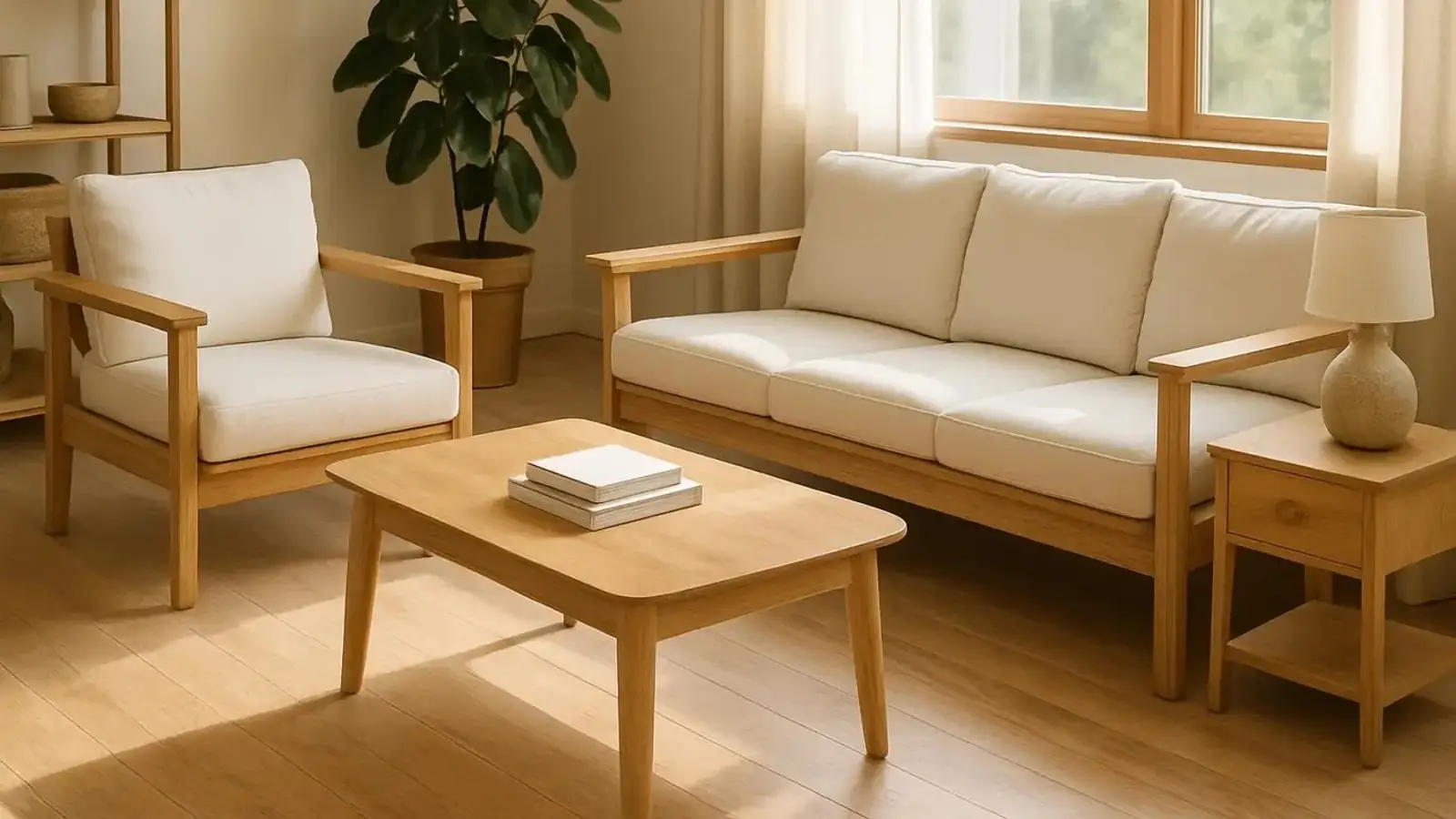How to Care for Wooden Furniture and Floors: Expert Tips
Discover practical wood care tips for furniture and floors. Learn how to protect wood from scratches, moisture, and sunlight to keep it beautiful for years.

Generated by Dall-e
Wood remains one of the most beloved materials in interior design. It brings warmth and elegance, whether used for furniture, wall panels, ceilings, or flooring. But natural materials come with their own demands: wood can fade, crack, dry out, or scratch if left unattended. Preserving its look and extending its life means following a few essential care practices.
Taking Care of Wooden Furniture
The starting point is the indoor climate. Wood reacts sharply to fluctuations in temperature and humidity. Specialists recommend keeping the air between 10–25 °C with a relative humidity of 40–60%. This balance becomes especially important in winter, when heating dries the air. If the room gets too dry, cracks may appear in the wood — a problem that can be prevented with a simple household humidifier.
Cleaning should be regular but gentle. The safest option is a soft cloth, used dry or only slightly damp. Microfiber works well because it leaves no lint and doesn’t scratch surfaces. For stains, a mild soapy solution is acceptable, but aggressive cleaning products are not. Harsh chemicals, acids, or abrasive sponges can damage the grain or strip away protective finishes.
Lacquered surfaces require extra caution. They are more vulnerable to scratches and heat. Hot cups or dishes should always rest on coasters, and direct sunlight should be avoided — prolonged exposure can cause lacquer to fade or turn yellow.
Protection from mechanical damage is another key step. Felt pads on the legs of chairs and tables prevent dents and scratches, while sharp-edged furniture should never be placed directly on bare floors. Small chips and scratches are best fixed right away, before they deepen. For minor flaws, wax sticks or specialized polishes, widely available in hardware stores, can help restore a neat appearance.
Looking After Wooden Floors
Wooden flooring shares much in common with furniture care, though it comes with its own specifics. The most important rule is to keep water at bay. Any liquid spilled on the floor should be wiped up immediately, since even short exposure can cause swelling or discoloration.
For dry cleaning, a vacuum cleaner with a soft nozzle works best, especially on textured flooring where dust collects easily. Damp cleaning should be limited to once a week, and only with a well-wrung cloth. Special products designed for wood floors are preferable — they clean effectively while also protecting the surface.
In high-traffic areas, rugs or runners are a smart investment, particularly near entrances and around heavy furniture. They shield the wood from sand and grit that act like sandpaper, leaving behind tiny scratches.
The type of finish also matters. Floors treated with oil or wax require occasional renewal — typically once or twice a year, a fresh protective coat should be applied. Lacquered surfaces demand less upkeep but may lose their shine over time, in which case polishing or re-lacquering restores their appearance.
Prevention and Seasonal Awareness
Regular inspection of both furniture and floors is highly recommended. Detecting small issues early prevents them from turning into costly repairs. It’s also important to keep seasonal changes in mind: wood shrinks slightly in dry winter air and expands in the humid summer months. These shifts are natural, but without proper care they can result in warping or gaps.
Wood doesn’t demand complicated routines, but it does require consistency. A stable indoor climate, careful cleaning, and timely protection against scratches and moisture are the foundations of care. With just a bit of attention, wood retains its natural beauty for years, continuing to add comfort and character to the home.
